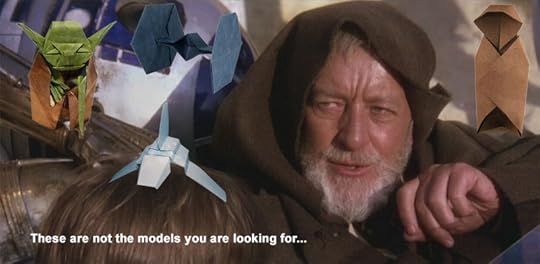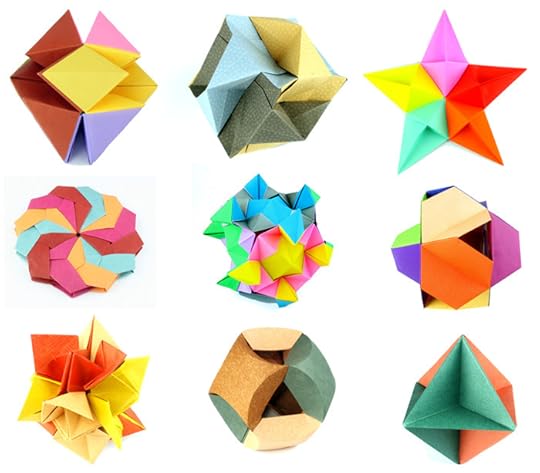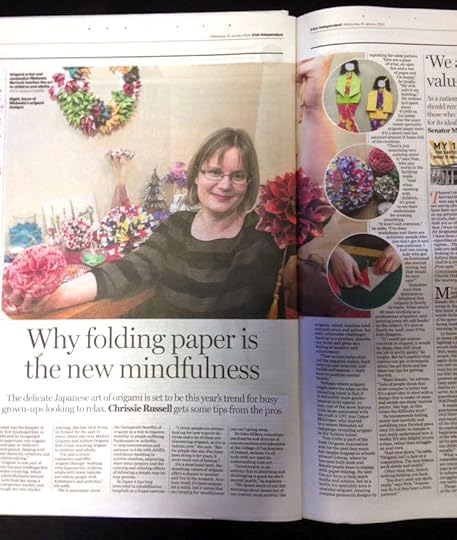Nick Robinson's Blog, page 13
February 26, 2016
Elegant designs wanted
Another book project looms, offering models that display the maximum amount of paper, which will be decorated with patterns. Folding the models should be an opportunity to relax, rather than struggle ;)
All suggestions welcomed!
February 25, 2016
Every picture tells a story
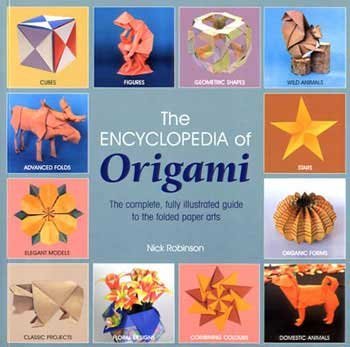 I’m trying to source new gallery photos for my “encyclopaedia” book, which is being reprinted and gives me the chance to add some different (and better) images of the latest material – the book is 10 years old!
I’m trying to source new gallery photos for my “encyclopaedia” book, which is being reprinted and gives me the chance to add some different (and better) images of the latest material – the book is 10 years old!
If you have any glorious images of models in hi-res (with the creator’s permission, as needed), you could appear in the book. Low res copies or online URLs will do to assess, the final choice is the publishers, who will handle all negotiations once you’ve agreed. A free copy would be given in thanks and proper credit included.
Many thanks
February 16, 2016
Leipzig is calling you James…
Off to Leipzig/Weimar to discuss this years Didaktiks Conferenz with my fellow organisers – Ich frue Mich darauf ;)
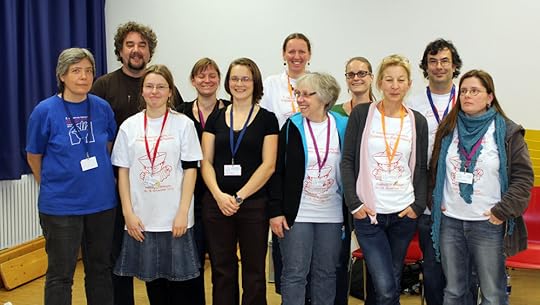 Bonus points if you can identify the musical pun in the title..
Bonus points if you can identify the musical pun in the title..
February 14, 2016
Fishy Business
February 9, 2016
Review – Six Simple Twists by Benjamin DiLeonardo-Parker
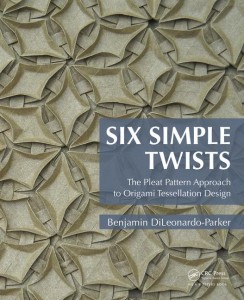 CRC Press Softback 118 pages 8”x10” ISBN 978-1-4822-4461-8
CRC Press Softback 118 pages 8”x10” ISBN 978-1-4822-4461-8
The author’s name is new to me, he is a “working origami pattern artist” based in Connecticut who specialises in origami tessellations. I remain to be convinced that the use of the word tessellations in this context isn’t a misnomer, but that’s just a personal bugbear! I’ve been uncertain how to best review the book but have decided to look at it from two perspectives; information and presentation.
Approaching the book as a seasoned folder, it is a through and comprehensive guide to the subject, written with no lack of passion. The contents are exclusively about triangular and hexagonal geometry, which I think misses a trick – the requirements for producing a triangular grid are somewhat higher than that for a square based grid. I feel that beginners might have enjoyed a few “Fujimoto twists” to get them started, given the word “simple” within the title.
Whilst I’m nowhere near expert in this genre, the book appears to be a complete, in-depth study of pleating and twisting. There is a section on designing new tessellations (way over my head) which provides a means for cataloguing and developing designs. As a source of inspiration and information for intelligent and accurate folders, I cannot fault the book. It continues the trend for books that take the subject of paper folding seriously rather than as a compendium of models.
As for presentation, I’m amazed that nobody at CRC put more effort into layout – the diagrams are far too small and could easily have been made larger without affecting pagination. This is tricky material and diagrams should be as easy to read as possible. I’ve had issues of this kind with publishers in the past and you really have to fight to have the information presented as clearly as possible. The “step” photos are not only small, but murky throughout and even a simple photoshop level command could have improved them considerably. The blue and red lines used in the artwork are quite “clunky” and seem to be inconsistent, some red lines have rounded ends, others square, for no apparent reason. I get the impression that CRC just cobbled this together and the input of a talented designer would have made a great difference for a relatively low cost.
So, presentation issues aside, how do I feel about the book? My main problem is the title, which is misleading in the extreme to the general public. An individual twist may be relatively simple, but once you start combining them, complexity increases dramatically. The models all require dedication and technique to produce beautiful results. One of the key skills that beginners lack is generally accuracy, without which, you won’t get far in tessellations! My wife (a non-folder) said “Hey, those look like beautiful models” and had a go. I kept my distance and watched as she failed miserably to make anything and bemoaned “this is NOT simple!” Perhaps not a scientific test, but anyone who is new to origami will seriously struggle with this book. Also, the Amazon price of near £25 seems rather high.
I have a great deal of sympathy for the author, whom I feel has been somewhat let down by the publisher. However, if you’re “into” this type of thing and have any desire to create your own designs (and have good eyesight!) it’s well worth overlooking the presentation issues for the information within.
Post-scriptum
Since I felt this was quite a critical review, it was only fair to run it past the author (whom I didn’t know) for comment. He replied; “I will say that I agree with every point you made, and I don’t feel in any way slighted. I would much prefer you give an honest review rather than a slant. That said, I admit to certain regrets when it comes to layout, but feel as though the information in the crease patterns and text make up for it. This is not a book to be picked up and run through in a quick manner, and it is helpful for a reader to know that going in. Additionally, I am working on a video tutorial series to go along with the book (and generally teach abstract design) which in combination should weather the weaknesses mentioned here. If people have specific questions of how to fold one of the twists, email me brdparker@gmail.com
January 29, 2016
Creativity in Watercliffe Meadow School
One of my young students created their own model ;)
Everything is proceeding as I have foreseen – almost
Sadly, Lucasfilm have decided to withdraw the license for a proposed Star Wars origami book. And it was all going so well, with permission from Kawahata to use his classic “Yoda”….
“Success, fame, money, an Origami Author craves not these things….”
January 28, 2016
Flexing, flexing, flexing…
I’m working on a book about Flexagons and Kaleidocycles – here’s a short test flex of a “flexicube”, one hand to hold the camera, one to flex ;)
http://www.nickrobinson.info/origami/wp_ori/wp-content/uploads/flexicube.flv
British Science Week
I’m running some workshops for British Science Week, on “Paper-folding, Science and Geometry” from 13th March 2016 at the Inman Pavilion, Grenoside, More details and booking information here.
January 20, 2016
Moremindfullnessigami!
Michaela Bertsch had an article about her folding work in the Irish Independent. It included some words of wisdom(?) from me ;)


